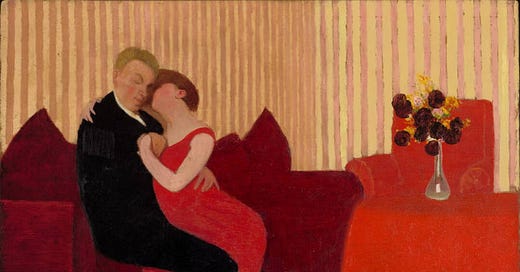This morning, during meditation, I noticed something unusual. There was a subtle excitement in the air—or more precisely, in me. A light eagerness I couldn’t explain. I paused to ask where it was coming from, but there was no reason I could find. On closer inspection, I realised it wasn’t an emotion, exactly—it was physical. The back of my head had subtly lifted, almost as if I were leaning into something. It was a postural thing. A readiness. A quiet tension.
The moment I noticed it, I let that part of my head relax. Almost instantly, the mild eagerness faded, and I felt more like myself again.
It made me wonder: where did that readiness come from? It wasn’t conscious. Could it be a hangover from an older version of me—one that hadn’t fully left the room? Something internal that hadn’t been properly seen or exorcised, and so still lingered in posture, not thought? In ordinary life, we’re usually not sensitive enough to detect these shifts. But in meditation, such micro-pretenses become clear. We can spot ourselves slipping into a version of being that isn’t quite real. A state we no longer need, but still find ourselves inhabiting.
What I noticed in that moment felt like a form of unconscious pretending. But the more I sat with it, the more I realised: we pretend consciously too—all the time. We pretend to be stronger than we are, smarter than we are, braver, more confident, more cheerful, more in control. We’re taught to do this. It’s what gets you through the world, we’re told. It’s what “works.” And often it does.
Take a simple example: a job interview. The interviewer walks in with a certain air. Maybe of superiority, maybe of detachment. Is he truly superior? It’s hard to say. But the projection is there, and it carries weight. If his boss were to enter the room, he might immediately drop into a more subservient stance. But once the boss leaves, the air of importance returns.
It’s not hypocrisy. It’s theatre. And we all participate in it. Most of us don’t even realise we’re doing it. Over time, the act settles into us. We no longer play the role—we become the role.
This isn’t a moral judgment. It’s an observation. Everyone, at some point, becomes both perpetrator and victim of performance. The pretending starts consciously but becomes second nature. It slips beneath awareness and becomes the default. It may even outlast the context in which it first arose.
I remember watching people at traffic signals—alone in their cars, unaware of being observed. Their faces would soften. Their postures would collapse slightly. There was a quiet honesty in that in-between space. But as soon as they stepped out into the world, the mask would return. The face would tighten. The back would straighten. The social body would take over.
Some versions of this are innocuous. But others carry a cost.
I had a relative who was a senior police inspector in a small town. He carried his authority not just in his badge, but in his stance, his speech, the way he moved. It became part of his being. But after retirement, that projection no longer fit. The authority was out of place. He tried to drop it, but without it, he looked lost. He began stammering. At 60. I sometimes wonder if his confidence was so tightly tied to the role, that without the role, the man beneath had nowhere to stand.
Here’s the part that gets less attention: every performance requires energy. Not metaphorical energy—actual muscular and neurological energy. Every time we tense, brace, posture, or hold ourselves in a certain way, we are recruiting muscle fibres, altering breath patterns, redirecting blood flow, and activating parts of the nervous system. This isn’t philosophical speculation—it’s measurable physiology.
Modern somatic psychology and body-based therapies have shown how emotional states are mirrored and maintained in the body. Muscle tension, shallow breathing, locked jaws, tight hips—these aren’t random. They are often the residue of past patterns, adopted in response to stress, expectation, or performance. Chronic pretenses—especially when held for years—can become postural habits. These habits, in turn, shape how we feel, how we think, and how we relate.
Of course, not all tension is the result of pretending. Some of it comes from trauma, injury, bad posture, even heredity. And not every form of social presentation is harmful—we need roles and norms to function. But when a pattern of pretending persists without awareness, especially one that goes against your nature, the body starts to pay for it. What begins as performance becomes strain. And strain held for decades can distort us—physically, emotionally, energetically.
The science isn’t complete yet. But researchers in fields like psychophysiology and neuroscience are beginning to piece it together. We now know that the autonomic nervous system responds not just to danger, but to social evaluation. It adapts constantly to how we’re perceived. Over time, the body learns how to brace. How to shrink. How to act. And unless we consciously intervene, it rarely learns how to stop.
That’s why something as simple as noticing a bit of tension in the back of the head—and letting it go—can feel like returning to yourself.
We think we’re pretending to get ahead. But often, we’re just surviving an outdated social script. Maybe it’s worth asking: What would it feel like to stop pretending—just for a while? To step out of the default performance and see what’s left. To loosen the grip. To soften the stance. To breathe without character.
Maybe there’s something real under there. Maybe even something beautiful.




